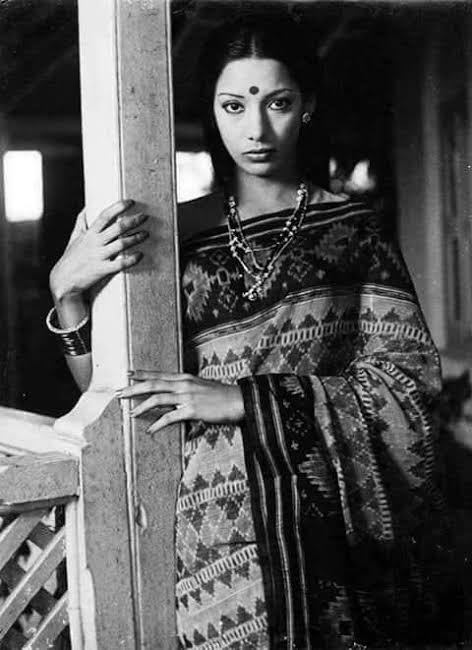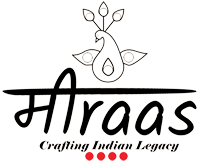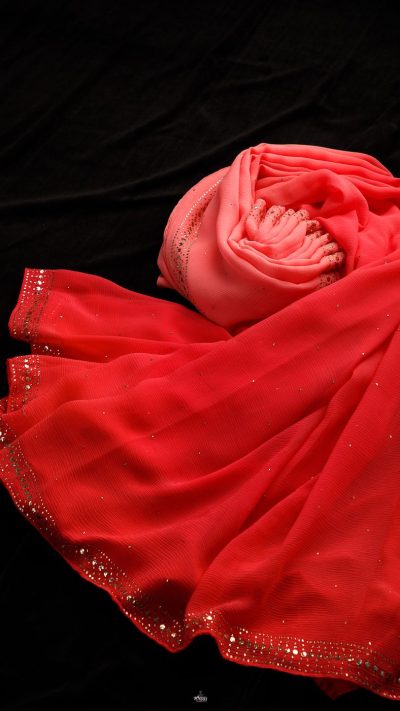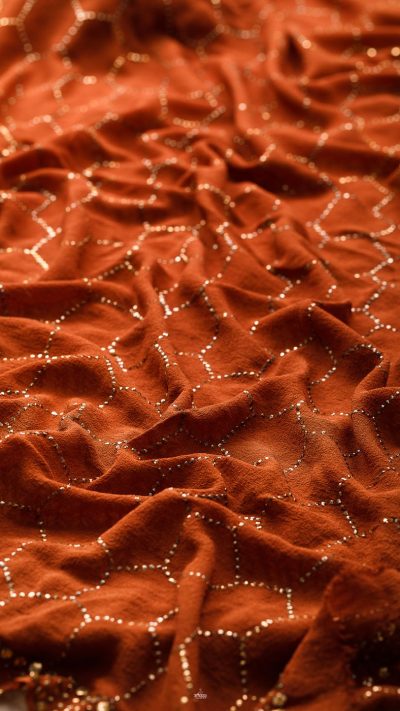Rajnigandha: A Flashback of Fragrant Memories
It was the Summer of 2019, when I was sitting with various mood board printouts of saree draping, and wracking my head, as to what I really desired in my Chikankari saree collection.

At that time, my older website had just one Chikankari Saree collective, titled…Chikankari Sarees. That’s it.
This is the thing with Meiraas; till the time we do not find a moodboard that just fits in, we don’t assign a unique name to our collections, and let them be online with a more generic name.
You would think, what’s in a name? Right? I could have just picked any random Urdu name that was floating, everywhere & that’s it – Safiya, Sadiya, Noor, Chasm E Badoor etc.
But here my thought always differed from the Universe I am operating in. A name says a lot.
Name of a collection is a cumulative of your emotions attached to that particular collections’ Moodboard, Emotions, Reveries, Inspirations; every experience that finally makes it possible to funnel down to the design ideology, fabrics, colour schemes, even price points etc. All this is a work of many months, that has to be assigned a name that speaks to its patrons, who patiently wait for the collection, in a heavily commodified market, and that too one that is perpetually on sale.
If in such a Universe, a patron is waiting patiently, then they deserve a name they feel a deep connection with. The name will tell them what we, as a Brand, are planning to bring forth. They need to identify with that ideology and language of design. This is what separates Patrons from just Buyers.
These were the thoughts going on in my mind in 2019, when I was still struggling to pin down on what was the Chikankari saree Universe lacking currently.
Yes, I know good fabrics, fine craftsmanship et al; but this was beyond that.
Frustrated at reaching nowhere, I decided to do what I always rely upon when I cannot think further. I took a walk in the Nature with some retro songs. It is here that some memories came rushing back.
The song was from Rajnigandha…”Rajnigandha Phool Tumhare…”, and my mind became like a kaleidoscope of images rushing from my childhood. Mummy in effortlessly draped sarees coming back from office; Mummy and mausis sipping tea and laughing; Naani making evening snacks and handing out to us in steel halwa plates, while I hug her comfortable palla; Mausi waiting for me to be back from school at Naani’s house, she sitting in her crisp cotton saree, listening to radio songs and reading Sarita; Mummy’s buaji, who for some reason I also called Buaji, in her smart Gandhi Aashram Silk sarees, and Kadambini magazine in her hand; Mummy and mausi shopping for sarees; the films we all watched on Doordarshan of 1970s, where heroines wore such effortless drapes; Mummy and her friends declaring Gulzar and Tarachand Barjatya films to be the best, and finalising their next saree purchase basis what heroines wore there.
Everything came rushing back like an array of memories, and then loomed the lovely face of Vidya Sinha.
Vidya Sinha with her lovely wheatish complexion, almond shaped eyes, messy plaits, short blouses & easy breezy sarees, and a lovely smile, and such a beautiful laugh.



Mummy always liked Rekha the most (not contesting), but I liked Vidya Sinha for her effortless grace. She reminded me of the women around me.
This was when I reminisced about how women dressed up in sarees uptil 1990. Something happened post 1990, that saree suddenly became unpalatable and unfashionable for all of us growing up.
Either it was the sudden influx of Satellite channels, that pushed a very non saree clad image of “modern woman”, or the sudden availability of Foreign brands, that became accessible suddenly in malls, that sarees got pushed completely out of the picture for us, at least in North India.
Even if we wanted to wear sarees, they had to be something that made us “look hot”.
I personally feel this ruined the complete imagery of Everyday Saree Wearing, more than anything else.
The same Hindi films, that displayed sarees with such elegant everyday panache, suddenly felt the need to wear solid-colored chiffons with tiny blouses and pelvic gyrations.
No problem with any of that!! But why did the effortless sarees go out completely?
Why did the smart drapes disappear?
Even now many younger girls are worried that they will 1.) Look “old” 2.) Fall down 3.) Trip over and fall flat 4.) Their saree will open up publicly.
From where have these ridiculous notions taken seat? I won’t deny that as a growing up girl, these were the notions I battled with as well.
(Surprisingly, no one has these presumptions for most Salon make up that adds unnecessary age to any face, or Cancun layered lehengas where I have seen women falling, or dresses in cheap materials that rip midway in parties. Women take them in their stride even today).
For my trousseau I got many sarees, none of them being my choice. I wanted to concentrate on Club Wear and Western Wear only. As a result, I did not know what to do with the sarees I got. I did receive some mandatory Handlooms (which are still rock solid by the way; in absence of my draping them my mother, mother-in-law draped them a lot, and they are even better with age now), but most sarees were the sequined variety on crepes, that were “in trend” back then. None of those survived, despite being worn extremely less.
I stayed away from sarees, because by then, every woman who wore saree wanted to “look hot”. Saree had become out of rotation in effortless wear, and it was too much effort to drape “a hot saree” and “look hot” all the time. I would rather slip on a dress, and look elegant. I feel this was the reason why saree draping became non inclusive for us North Indian women at least.
This thought reminded me of all films of the 1970s, where saree dressing was effortless and inclusive. Saree was for all types of looks – demure, homely, elegant, smart, sexy, bohemian – whichever personality or mood best describes you. This is because, then saree was Everyday Wear, and not relegated to an occasion only.
Saree was the daily Rajnigandha of our lives. It held emotions, no dress or top from fast fashion mall brands can.
This is where I pigeonholed the central muse of my everyday saree collection as Vidya Sinha, and the moodboard as RAJNIGANDHA – the era where women wore sarees as Effortless Everyday Luxury.



I realised, more than Chikankari, this was what was missing from Saree Wearing now. The Everyday Effortless grace; saree as not just a drape, but as the best friend; saree not as a tool to “look hot”, but as a conveyor of our Everyday Expression.
Possibly this is why, despite so many Chikankari saree options out there, patrons ardently wait a year for Rajnigandha and requests to bring back Khili Dhoop and Thandi Chhaon, never cease.



The author of this article is its Co-Founder & Head of Creative, Vidhi Rastogi. The views expressed in this blog post are her personal and based on her personal experiences and ideology about saree draping and textile traditions.
















Add comment
You must be logged in to post a comment.